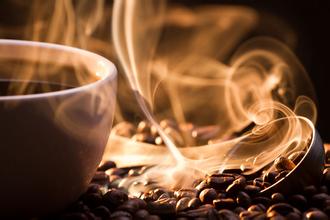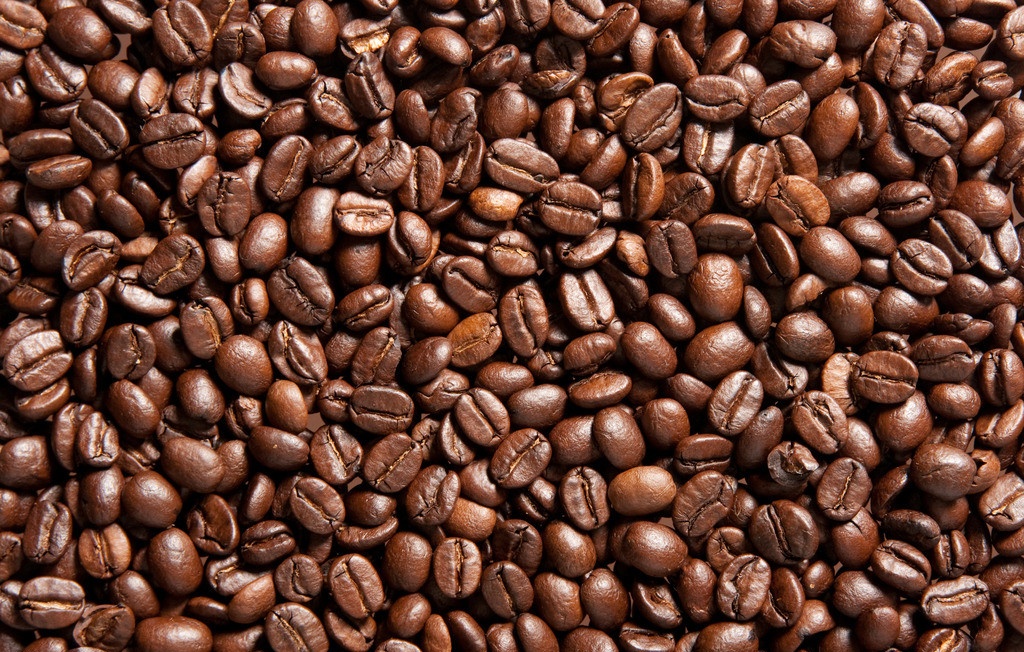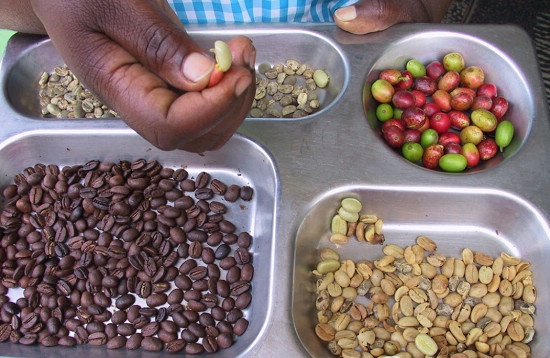El Salvador Himalayan coffee flavor with soft, slightly sour and beautiful sweetness
El Salvador was originally inhabited by the Mayan Indians.
Scenery of the Republic of El Salvador
Scenery of the Republic of El Salvador (11)
It was colonized by Spain in 1524.
Independence was declared on September 15, 1821 and later became part of the Mexican Empire.
In 1823 the empire collapsed and El Salvador joined the Union of Central America.
The Republic was proclaimed on February 18, 1841 after the disintegration of the Union in 1838.
Since the 1930s, soldiers have launched coups many times, and the political situation has been in turmoil for a long time.
Martinez became vice president and defense minister in 1931, during the Great Depression, political corruption and the rapid expansion of the influence of the Communist Party of El Salvador. Arturo Araujo was forced to step down and nominated Martinez as the next president.
In January 1932, local elections began, and a large number of Communist Party candidates were elected, but they were not recognized by the government; the Communist Party of El Salvador decided to launch an uprising on the 22nd, but Martinez discovered it and immediately ordered the arrest of Communist Party leader Farah Bendo Marty. The leaderless farmers, armed with machetes, launched the uprising as scheduled, but failed under the crackdown by government forces, which immediately retaliated and slaughtered more than 30,000 rebellious farmers.
For 13 years after 1932, El Salvador was ruled by Martinez.
On May 19, 1934, El Salvador announced the establishment of diplomatic relations with Manchukuo, becoming the second country after Japan to recognize the regime.
After the outbreak of the Pacific War in 1941, El Salvador joined the anti-axis camp of Britain, the United States and other countries.
In April 1944, intellectuals and students launched a general strike because of economic paralysis.
In May 1945, Martinez stepped down, went into exile in Guatemala and then went to live in Honduras.
When the reformist revolutionary junta came to power in 1979, both the far right and the far left were dissatisfied with the government, and the conflict broke out and turned into a civil war.
In 1980, a formal civil war broke out in El Salvador, confronting the United States-backed government and the Cuban-backed Farabundo Marti National Liberation Front.
On January 16, 1992, the Marty Front signed a "peace agreement" with the government, ending the 12-year civil war in El Salvador.
In March 2014, El Salvador held the second round of presidential election. Vice President Salvador Sanchez Salon, candidate of the ruling Marty Front, won with 50.11% of the vote and was sworn in on June 1 for a five-year term.
El Salvador, located in the northwest of Central America and bordered by the Pacific Ocean to the south, is one of the birthplaces of the ancient Mayan civilization. The nearby volcanoes, plateaus, lakes and bathing beaches along the Pacific coast are all very pleasant. But El Salvador is most famous for its unique, mild-flavored coffee.
El Salvador is one of the small countries in Central America with a very dense population. People here love coffee. The coffee in El Salvador tastes well balanced. Salvadoran coffee exports account for 40% of the country's exports. The best quality coffee is exported from January to March each year, and 35% of the extra hard beans are exported to Germany. In the early 1990s, due to the impact of war, the national economy of El Salvador was greatly damaged, even destroyed. As a result, the output of coffee decreased from 3.5 million bags in the early 1970s to 2.5 million bags in 1990-1991.
In El Salvador, the coffee beans rich in the Kuskabapa region are the best, slightly lighter, fragrant, pure and slightly sour. Like Guatemala and Costa Rica, coffee in El Salvador is graded according to altitude, and the higher the altitude, the better the coffee. The best brand is Pip, whose quality has been recognized by the American Organic Certification Society. Another rare coffee is Parkmara, a hybrid of Pacas coffee and Marago Rippi coffee, best produced in western El Salvador, adjacent to Santa Ana, which is close to the border with Guatemala. Parkmara coffee is full-grained, but the aroma is not very strong. In 1742, coffee was introduced to El Salvador from the Caribbean (1740).
In the mid-19th century, El Salvador's original export pillar Indigo (one of the dyes) received a gradual decline in the development of synthetic dyes in Europe, and coffee gradually became the main export product under the guidance of the government.
In 1856, the first 693 bags of coffee beans were shipped to Europe. Europe was El Salvador's chief coffee customer until World War II, which was replaced by the United States after World War II.
In the 1970s, El Salvador produced a record 350000 bags of coffee. With the intensification of the civil war, the coffee industry was in turmoil.
Coffee production in El Salvador was once affected by domestic political instability. In 1992, the parties signed a peace agreement and the civil war was suspended. The coffee industry began to recover.
Present situation of coffee production
"natural and man-made disasters" and "ill-fated" are the most appropriate words to describe the challenges facing the coffee industry in El Salvador. Despite the haze of war, El Salvador's coffee production still faces challenges from time to time, including: 1998, hurricanes; 2001, earthquakes; 2002, volcanic eruptions; 2012, leaf rust.
Despite the challenges, El Salvador maintained a high level of coffee production, according to ICO International Coffee Organization, from 2008 to 2012, total coffee production in El Salvador remained at the Top15 level among ICO member countries. In 2013, affected by the leaf rust disaster, 70% of domestic farms were infected, and the output dropped sharply by about 40%, falling to 16.
El Salvador 08-13 Coffee production and ranking (in thousand bags, per bag of 60kg) Civil War caused chaos and affected economic development, but ironically allowed the ancient coffee species to be preserved, and the situation was so chaotic that coffee producers in El Salvador failed to catch up with the renewal of coffee varieties in Central and South America.
El Salvador produces 100% Arabica coffee, of which 68% is Bourbon, Coffea arabica var. Bourbon), 29% Pacas, other varieties including Pacamara,Caturra, etc.
The Pacas variety, first discovered in El Salvador in 1949, is a natural hybrid between bourbon and Catura.
The variety Pacamara, which was artificially bred by pacas and maragogipe (or maragogype), was first bred in 1958 (1954). Pacamara species is a rare artificial breeding of excellent varieties, blue is better than blue, perfectly inheriting the advantages of the mother plant, both the excellent taste of pacas species, raw bean granules also inherited the large size of malagogipe. The Pacamara species is thought to be the result of the pursuit of large Arabica species.

Important Notice :
前街咖啡 FrontStreet Coffee has moved to new addredd:
FrontStreet Coffee Address: 315,Donghua East Road,GuangZhou
Tel:020 38364473
- Prev

Balanced, clean, Costa Rican Yersalo coffee flavor, characteristics, taste and manor
Staleika coffee has always been regarded as a perfect type of classic flavor, balanced, clean and mild is his tone. This batch of western valley Yerzaro treatment plant is famous for its excellent natural geographical conditions and excellent regional planting management techniques. Almost perfect classic flavor, lively citrus flavor in the acidity, BlackBerry aroma, acidity and taste thick, melons
- Next

Elegant taste, moderate sour taste, Mexican coffee flavor, characteristics, taste and manor
The main producing areas are: Kolabegu, Australia Aluca states, the products are mostly washed beans produced in the highlands, with good aroma and sour taste, the grade is divided into three categories according to altitude: Aldura (219m-1280 m), Prima. Rabe Society (853-1006 m) Puine. Raba Society (640-762 m). Coffee beans are mainly exported to the United States: Aldura, Mexico. Mouth
Related
- Detailed explanation of Jadeite planting Land in Panamanian Jadeite Manor introduction to the grading system of Jadeite competitive bidding, Red bid, Green bid and Rose Summer
- Story of Coffee planting in Brenka region of Costa Rica Stonehenge Manor anaerobic heavy honey treatment of flavor mouth
- What's on the barrel of Blue Mountain Coffee beans?
- Can American coffee also pull flowers? How to use hot American style to pull out a good-looking pattern?
- Can you make a cold extract with coffee beans? What is the right proportion for cold-extracted coffee formula?
- Indonesian PWN Gold Mandrine Coffee Origin Features Flavor How to Chong? Mandolin coffee is American.
- A brief introduction to the flavor characteristics of Brazilian yellow bourbon coffee beans
- What is the effect of different water quality on the flavor of cold-extracted coffee? What kind of water is best for brewing coffee?
- Why do you think of Rose Summer whenever you mention Panamanian coffee?
- Introduction to the characteristics of authentic blue mountain coffee bean producing areas? What is the CIB Coffee Authority in Jamaica?

